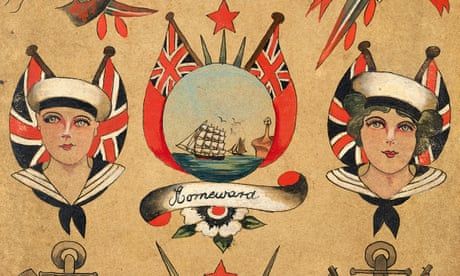
Highly decorated skin is everywhere these days, but tattoos have a more elevated pedigree than you may think. A new book aims to make us think differently about Victorian aristocrats … and bank managers
In an age in which it appears impossible to walk down the high street every summer without being confronted by countless examples of inked flesh, you may be inclined to think that tattoos are no longer associated with the underground, or indeed the underclass. But the history of the practice is long and winding. A Vanity Fair account from 1926 is typical of many similar interventions both before and after: “Tattooing has passed from the savage to the sailor, from the sailor to the landsman. It has since percolated through the entire social stratum; tattooing has received its credentials, and may now be found beneath many a tailored shirt.”
“There’s obviously a long, complicated and important history relating tattoos to sailors, and also to criminals and assorted ne’er do wells”, explains Matt Lodder, author of Tattoos: The Untold History of a Modern Art), a handsomely illustrated new book on the subject. “But the main reason, certainly in Britain, we have a tattooing industry is because rich people wanted to get tattooed. I wanted to explore that industry and how it developed, and especially look at the people involved in it who have, with varying degrees of success, made tattooing a serious and standardised professional practice.”
Continue reading...